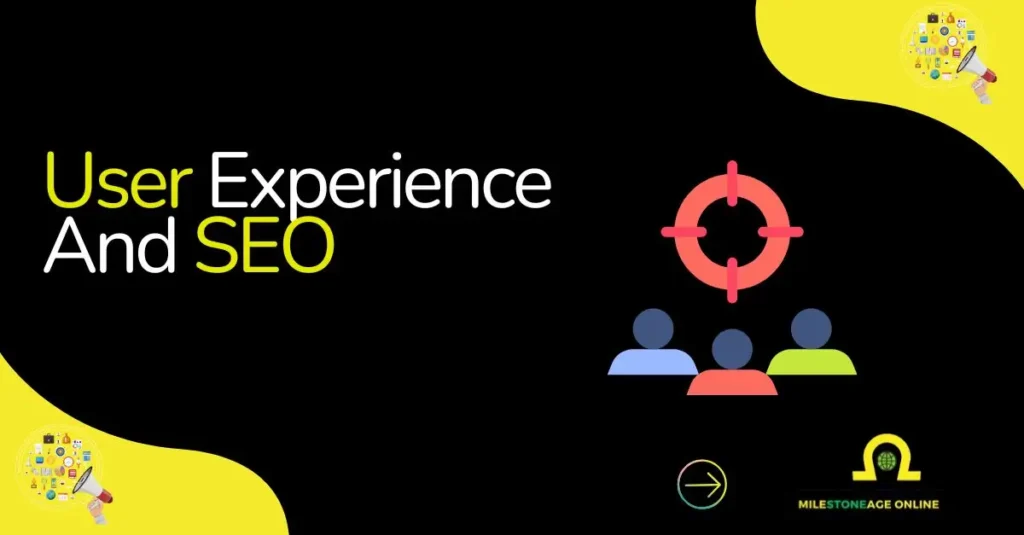Integrating User Experience and SEO strategies is crucial for enhancing website performance. A seamless UX leads to improved user engagement, reduced bounce rates, and higher conversion rates, which in turn positively impact SEO rankings.
Key aspects include optimizing technical SEO elements, crafting high-quality content, and structuring header tags effectively. Continuous improvement based on user feedback ensures sustained SEO success.
Key Takeaways:
- UX directly influences SEO performance.
- Technical SEO is essential for a seamless user experience.
- High-quality, relevant content enhances both UX and SEO.
- Well-structured header tags improve readability and SEO.
- Continuous iteration based on user feedback is vital.
By prioritizing UX in SEO strategies, websites can achieve better user satisfaction and improved search engine rankings.
Introduction
User experience (UX) and SEO go hand in hand in improving your website’s performance. A great UX means users can find what they need easily and quickly, which keeps them engaged.
This leads to better rankings on search engines. When UX and SEO work together, they create a seamless experience for the user and make it easier for search engines to crawl your site.
Search engines like Google value user-friendly websites and reward them with higher visibility. Optimizing for both can help drive traffic, increase conversions, and build trust with your audience.
Let’s see how these two elements work together.
Understanding User Experience in the Context of SEO
User experience (UX) plays a critical role in how your website ranks and performs on search engines. A good UX makes it easy for users to navigate, find what they need, and stay longer on your site.
- Usability: A well-organized website is easy for users to interact with.
- Accessibility: Ensure your site is usable for all users, including those with disabilities.
- Interaction Design: Design smooth interactions that engage users and make them feel comfortable.
How UX affects user behavior: - Bounce Rates: A poor UX leads to users leaving quickly.
- Dwell Time: A positive UX encourages users to stay on the site longer.
Research shows that a well-designed user experience can increase conversion rates by up to 400%.
The Intersection of SEO and UX Design
When SEO and UX work together, they help users find your site and stay on it longer. SEO focuses on getting people to your website, while UX ensures they stay and enjoy their experience.
- Align SEO with UX: User-centered design makes sure SEO tactics focus on user needs.
- Content Design: Content should be both SEO-friendly and easy to read.
Case studies show that UX improvements boost SEO results: - CareerFoundry integrated UX design principles into their site, improving search rankings and organic traffic.
Technical SEO: The Backbone of a Seamless User Experience
Technical SEO is all about optimizing your website so that search engines can crawl and index it easily. It also directly affects how users experience your site.
- Site Speed: Faster websites provide a better user experience and rank better on search engines.
- Mobile-Friendliness: Ensure your website works well on mobile devices to retain users.
- Secure Connections (HTTPS): Websites with HTTPS provide a safer experience and are ranked higher.
- Structured Data: Helps search engines understand your content better and display it more effectively.
Technical issues, like slow loading speeds or broken links, harm both user experience and SEO.
To resolve these issues: - Google PageSpeed Insights: Check and improve your site’s speed.
- Mobile-Friendly Test: Ensure your site looks good on all devices.
A solid technical foundation improves both user experience and search engine rankings.
Crafting Content That Satisfies Both Users and Search Engines
Creating content that appeals to both users and search engines is essential for online success. High-quality content builds trust with users and improves SEO rankings.
- High-Quality Content: Provide valuable, relevant, and informative content that addresses user needs.
- Keyword Optimization: Use keywords naturally within your content. Avoid keyword stuffing, but ensure relevance.
- Engaging Writing: Make content interesting by using clear language and keeping the user in mind.
- Multimedia Elements: Add images, videos, or infographics to break up text and enhance the user experience.
- Aligning with User Intent: Understand what users are searching for and tailor your content to answer their questions.
- LSI Keywords: Incorporate related terms and phrases that improve content relevance and SEO performance.
By balancing user-friendly writing with effective SEO practices, your content will meet both needs.
Optimizing Header Tags for Improved SEO and UX
Header tags (H1, H2, H3) structure your content and make it easier to read. They are essential for both SEO and user engagement.
- Role of Header Tags: H1 is for the main title, while H2 and H3 help break down sections and sub-sections.
- Best Practices: Use H2 for main points and H3 for details, making content scannable.
- Improve Readability: Properly structured headers make it easier for readers to navigate.
- SEO Benefits: Correct use of headers can help with keyword optimization and ranking in search engines.
Well-structured headers make content more digestible and help with SEO, increasing visibility and engagement.
Measuring the Impact of UX on SEO Performance
You can measure the success of UX improvements by tracking key performance indicators (KPIs). These metrics show how well your design impacts user engagement and SEO outcomes.
- KPIs for UX: Track metrics like page load time, bounce rate, and dwell time.
- Tools for Tracking: Use Google Analytics to monitor user behavior and engagement.
- Analyzing Correlation: Compare SEO metrics before and after UX improvements to see the impact.
Studies show that sites with optimized UX experience increased organic traffic and better user retention. By tracking these KPIs, you can clearly see the effects of your UX changes.
Continuous Improvement: Iterating Based on User Feedback
User feedback is a powerful tool for ongoing UX and SEO improvements. Collecting insights from your audience helps refine your website’s design and content.
- A/B Testing: Run tests to compare different versions of content or design to see which performs better.
By iterating based on feedback, you can continually improve both the user experience and SEO. - Gathering Feedback: Use surveys, usability testing, and analytics to get insights from users.
- Methods for Collection: Utilize pop-up surveys, on-site feedback forms, and heatmaps to gather user opinions.
- Using Feedback: Analyze feedback to make informed changes to your website’s design and content.
Enhancing UX for Better SEO
Improving user experience is key to boosting your SEO. By focusing on quality content, proper use of headers, and continuous feedback, you create a site that both users and search engines love. This leads to more engagement, better rankings, and higher conversions.
Start improving your website’s UX today. Optimize your content, streamline navigation, and monitor results. This will not only enhance your SEO but also create a better experience for your users.
FAQs
How does UX impact SEO?
A well-designed UX leads to improved user engagement, reduced bounce rates, and higher conversion rates, all of which positively affect SEO rankings.
What are the key elements of UX?
Key elements include usability, accessibility, and interaction design, which collectively enhance the user’s experience on a website.
How can I improve my website’s UX for better SEO?
Focus on optimizing technical SEO aspects, creating high-quality content, and structuring your website with clear and concise header tags.
What tools can help in measuring UX impact on SEO?
Tools like Google Analytics, Hotjar, and SEMrush can provide insights into user behavior and engagement metrics.
Why is continuous improvement important in UX and SEO?
Continuous improvement based on user feedback ensures that your website remains user-friendly and aligned with SEO best practices, leading to sustained success.






